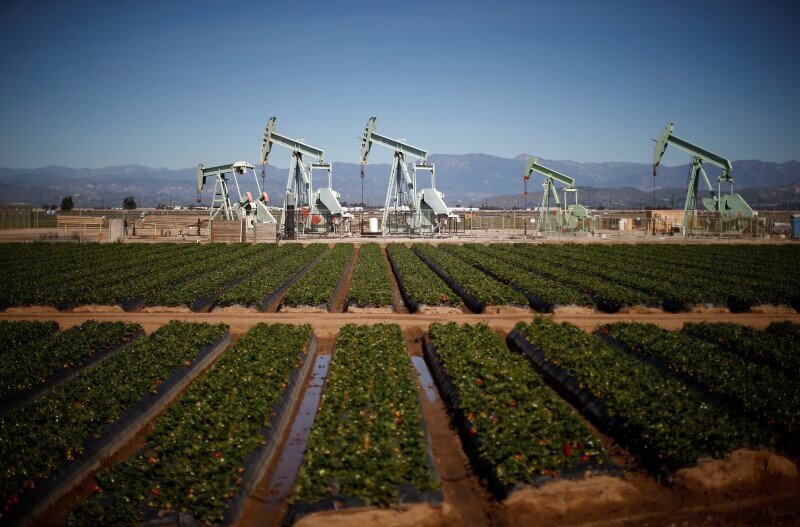By Scott DiSavino
NEW YORK (Reuters) – Oil prices fell 4 percent on Friday, paring most of the previous session’s rise as traders noted that a tropical storm was behind this week’s unexpected slump in U.S. crude inventories. The market ended up around 3 percent, its first gain in three weeks. Traders cited hopes for a global deal on stabilizing crude output after Saudi Arabia, the leading oil producer inside OPEC, and Russia, the biggest producer outside the group, agreed on Monday to cooperate in oversupplied markets. Brent crude Oil prices shot up on Thursday after U.S. government data showed the biggest weekly drop in stockpiles last week since January 1999 as Gulf Coast imports slumped to the lowest on record. “Most of yesterday’s increase was on a false reading on a drop in crude oil stocks. But a closer look showed that it was mostly due to the storm delaying imports,” said James Williams, president of energy consultant WTRG Economics in Arkansas. “Next week, we’re going to see a tremendous increase in oil stocks because of all the oil that did not come in last week because of Hermine,” Williams said.
U.S. drillers this week added oil rigs for a 10th week in the past 11, according to the closely followed Baker Hughes rig count report on Friday. It was the longest streak without rig cuts since 2011. Greenback-denominated oil was under pressure after the dollar index <.DXY> rose on concerns over the health of the EU economy and on remarks by Federal Reserve policymakers helped boost investor expectations of a near-term increase in U.S. interest rates. [USD/] Trading was fairly thin on Friday, and analysts and traders kept debating how effective a deal would be to limit supply should OPEC and non-OPEC producers agree when they meet informally in Algeria on Sept. 26-28. Algeria’s oil minister on Friday said two separate agreements could be required between OPEC and non-OPEC producers.
The International Energy Agency has said it expects oil demand to exceed supply in the third quarter of 2016, meaning record global crude stockpiles should start falling.
But analysts from Morgan Stanley said in a note there were risks the market might not rebalance until “late 2017, or even 2018.”
The oil options market indicates investors are not betting on a producer deal this month, although they are growing more optimistic that the market will eventually move closer to balance.
(Additional reporting by Osamu Tsukimori in Tokyo and Dmitry Zhdannikov in London, additional reporting by Jessica Resnick-Ault in New York; Editing by David Gregorio and Cynthia Osterman)
Oil falls 4 percent; U.S. crude draw seen as glitch

By Scott DiSavino













